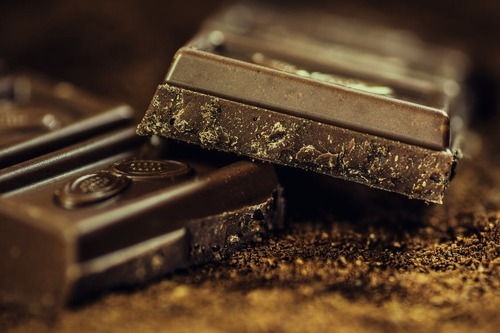
The Environmental Impact of Chocolate Production
As a devoted chocolate enthusiast, I’ve spent years exploring its rich history, complex flavours, and fascinating journey from bean to bar. It’s a food that evokes comfort, celebration, and pure indulgence. But have you ever paused, mid-bite, to consider the environmental story behind that delicious treat? The reality is that our global love affair with chocolate carries a significant environmental weight, one that demands our attention and thoughtful consideration. Understanding this impact doesn’t mean abandoning our enjoyment, but rather empowering ourselves to make more conscious choices.
The Shadow of the Bean: Deforestation and Biodiversity Loss
Perhaps the most pressing environmental issue tied to chocolate production is deforestation, particularly in the tropical regions where the cacao tree thrives. West Africa, specifically Côte d’Ivoire and Ghana, supplies the vast majority – nearly three-quarters – of the world’s cocoa. This intense concentration of production has led to devastating forest loss. Astonishingly, data suggests that between 2003 and 2017, a staggering 1.65 million hectares of tropical moist forest in Côte d’Ivoire were converted into cocoa plantations, representing 45% of the country’s total tropical moist forest loss during that period. Ghana faces a similar crisis, with cocoa farming implicated in significant forest degradation. This isn’t just about losing trees; it’s about dismantling entire ecosystems. These forests are biodiversity hotspots, home to countless species of plants and animals. The expansion of sun-tolerant cocoa monocultures, replacing shade-grown traditional methods, destroys habitats crucial for wildlife, including endangered species like chimpanzees, elephants, and numerous migratory songbirds that rely on these forests (as highlighted by the National Wildlife Federation). Research published in Conservation Biology confirms this, showing that while diverse agroforestry systems can support birdlife, highly intensified, low-shade cocoa farms cause a sharp decline in bird diversity, particularly affecting forest-specialist species (read the study abstract here). The problem is compounded by illegal farming, with a significant portion of cocoa production encroaching upon protected areas, further accelerating habitat destruction.
Beyond the Trees: Climate, Soil, and Water Concerns
The environmental impact extends far beyond the visible loss of trees. Deforestation itself is a major contributor to climate change, releasing vast amounts of stored carbon into the atmosphere and diminishing the planet’s capacity to absorb greenhouse gases. While chocolate’s overall carbon footprint might be lower than that of meat or dairy, the land-use changes associated with cocoa farming are significant climate drivers. Furthermore, climate change is creating a challenging feedback loop. Rising temperatures, erratic rainfall patterns, and prolonged dry seasons – phenomena exacerbated by global warming and events like El Niño – are negatively impacting cocoa yields (as discussed in Nature). These changing conditions create environments where pests and diseases, such as black pod disease and cocoa swollen shoot virus, can thrive, further threatening harvests and farmer livelihoods. Conventional cocoa farming, especially in monoculture systems, often relies heavily on synthetic pesticides and fertilizers to combat these issues and maintain soil fertility. This reliance on agrochemicals can lead to soil degradation over time and contributes to water pollution, harming aquatic ecosystems and potentially impacting local communities (find more on cocoa production challenges here). The removal of forest cover also disrupts natural water cycles and increases soil erosion, further degrading the land.
Seeds of Change: Cultivating Sustainable Solutions
Despite the significant challenges, there is growing momentum towards creating a more sustainable cocoa sector. A key strategy is the promotion of agroforestry systems. Unlike monocultures, agroforestry involves growing cocoa under a canopy of diverse native trees and alongside other crops. This approach mimics the natural rainforest environment where cocoa originated, offering numerous ecological benefits. Agroforestry helps conserve biodiversity, sequesters carbon, improves soil health and moisture retention, aids in natural pest control, and regulates the microclimate (learn more about agroforestry benefits). For farmers, it can also diversify income streams and enhance food security, building resilience against climate and market fluctuations. Organizations like the Rainforest Alliance are championing these methods, integrating requirements for increased tree cover and biodiversity-boosting practices into their certification standards. They are also pioneering the use of technology, employing GPS mapping and satellite imagery to monitor farm boundaries and prevent encroachment into forested areas. Another crucial concept is ‘sustainable intensification,’ which focuses on increasing cocoa yields on existing farmland through improved agricultural practices, such as integrated pest and soil management, reducing the pressure to clear new land. Research is also exploring the carbon footprint of different systems using Life Cycle Analysis (LCA) to provide data supporting the shift to sustainable models (see project details here).
The Path Forward: Collective Action and Conscious Choices
Transforming the cocoa industry requires a concerted effort from all stakeholders. Public-private partnerships like the Cocoa & Forests Initiative (CFI) bring together governments (like those of Côte d’Ivoire and Ghana) and major chocolate companies to tackle deforestation head-on, focusing on forest protection, restoration, and promoting agroforestry. Traceability is becoming increasingly critical. Knowing where cocoa comes from is essential to ensure it hasn’t been grown on illegally deforested land. Initiatives are underway to improve supply chain transparency, though challenges remain, as a large percentage of cocoa is still difficult to trace back to its origin. Regulations like the European Union Deforestation Regulation (EUDR) are putting pressure on companies to demonstrate that their imported cocoa is deforestation-free (explore trade and policy links). However, ensuring that the costs of compliance don’t unfairly burden smallholder farmers, who are often living in poverty, is crucial. Addressing the economic vulnerability of farmers is intrinsically linked to environmental sustainability; fair pricing and living incomes empower farmers to invest in sustainable practices (read about the farmer income debate). Initiatives like the annual Chocolate Scorecard help consumers navigate the complex landscape by ranking companies on their sustainability performance, encouraging transparency and rewarding progress. While direct trade models offer potential, systemic change across the dominant commodity market is needed (consider ethical chocolate possibilities).
Savouring a More Sustainable Future, Bite by Bite
The environmental story of chocolate is complex, woven with threads of ecological challenges, economic pressures, and human livelihoods. Recognizing the impact of cocoa farming – the deforestation, the biodiversity loss, the climate implications – is the first step towards fostering change. It’s clear that business as usual is not sustainable. However, the narrative isn’t solely one of despair; it’s also one of innovation and growing commitment. Agroforestry, sustainable intensification, traceability technologies, collaborative initiatives like CFI, and increasing regulatory pressure offer pathways towards a future where chocolate production can coexist more harmoniously with nature. As consumers, our choices ripple through the supply chain. By seeking out brands committed to transparency and sustainability, supporting certifications like Rainforest Alliance, Organic, and Fair Trade (find sustainable options here), and engaging with resources like the Chocolate Scorecard, we can collectively nudge the industry towards better practices. It’s about transforming our appreciation for chocolate into informed action, ensuring that this beloved indulgence doesn’t come at the cost of the planet we all share. Let’s strive to make our chocolate moments not just delicious, but also consciously chosen and environmentally kinder (learn more from WWF). The journey towards truly sustainable chocolate requires ongoing effort, but it’s a journey worth embarking on, for the love of chocolate and the health of our world (see Côte d’Ivoire’s resilience efforts).



